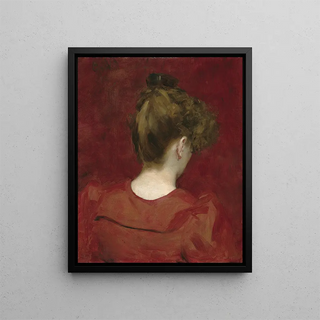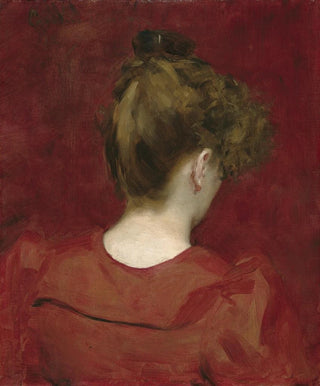Art print | Study of Lilia - Carolus-Duran


View from behind

Frame (optional)
Art print of Lilia Study - Carolus-Duran – Captivating Introduction
The artwork "Lilia Study" by Carolus-Duran is a true immersion into the intimacy of a frozen moment, a moment of grace and delicacy. This painting, which captures the ephemeral beauty of a young woman, transports us into a universe where light and shadow intertwine to give life to a scene imbued with poetry. Through this study, the artist manages to evoke deep emotions, making the viewer a witness to fragile, almost tangible beauty. The depiction of Lilia, with her contemplative gaze and subtle smile, invites reflection, escapism, and daydreaming. This work is not merely a model study but a genuine dialogue between the artist and his subject, a silent conversation resonating through time.
Style and uniqueness of the work
The originality of "Lilia Study" lies in Carolus-Duran's distinctive style, which combines realism and impressionism. Fluid brushstrokes and delicate nuances of color create a vibrant and lively atmosphere. The mastery of light is particularly remarkable, with each reflection and shadow carefully crafted to give an impression of depth and dimension. The artist knows how to play with textures, making Lilia's skin almost luminous, while the drapes of her clothing add a touch of sophistication to the overall composition. This work stands out for its ability to capture not only the physical appearance of its model but also her essence, thoughts, and inner world. Carolus-Duran thus manages to transcend simple representation to offer a true aesthetic experience, a meeting with the soul of his subject.
The artist and his influence
Carolus-Duran, an emblematic figure of the 19th century, is often praised for his contribution to French academic art. A student of great masters, he develops a style that is uniquely his own, blending technical rigor with artistic sensitivity. His career is marked by an incessant quest for perfection, both in portraiture and genre scenes. Influenced by the Impressionist movement, he does not hesitate to incorporate elements of this style into his works, while remaining faithful to an approach

Matte finish

View from behind

Frame (optional)
Art print of Lilia Study - Carolus-Duran – Captivating Introduction
The artwork "Lilia Study" by Carolus-Duran is a true immersion into the intimacy of a frozen moment, a moment of grace and delicacy. This painting, which captures the ephemeral beauty of a young woman, transports us into a universe where light and shadow intertwine to give life to a scene imbued with poetry. Through this study, the artist manages to evoke deep emotions, making the viewer a witness to fragile, almost tangible beauty. The depiction of Lilia, with her contemplative gaze and subtle smile, invites reflection, escapism, and daydreaming. This work is not merely a model study but a genuine dialogue between the artist and his subject, a silent conversation resonating through time.
Style and uniqueness of the work
The originality of "Lilia Study" lies in Carolus-Duran's distinctive style, which combines realism and impressionism. Fluid brushstrokes and delicate nuances of color create a vibrant and lively atmosphere. The mastery of light is particularly remarkable, with each reflection and shadow carefully crafted to give an impression of depth and dimension. The artist knows how to play with textures, making Lilia's skin almost luminous, while the drapes of her clothing add a touch of sophistication to the overall composition. This work stands out for its ability to capture not only the physical appearance of its model but also her essence, thoughts, and inner world. Carolus-Duran thus manages to transcend simple representation to offer a true aesthetic experience, a meeting with the soul of his subject.
The artist and his influence
Carolus-Duran, an emblematic figure of the 19th century, is often praised for his contribution to French academic art. A student of great masters, he develops a style that is uniquely his own, blending technical rigor with artistic sensitivity. His career is marked by an incessant quest for perfection, both in portraiture and genre scenes. Influenced by the Impressionist movement, he does not hesitate to incorporate elements of this style into his works, while remaining faithful to an approach






